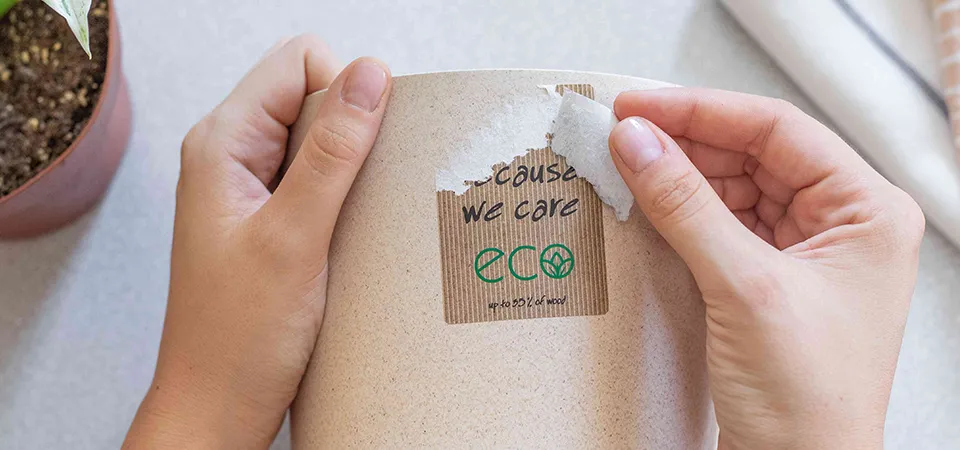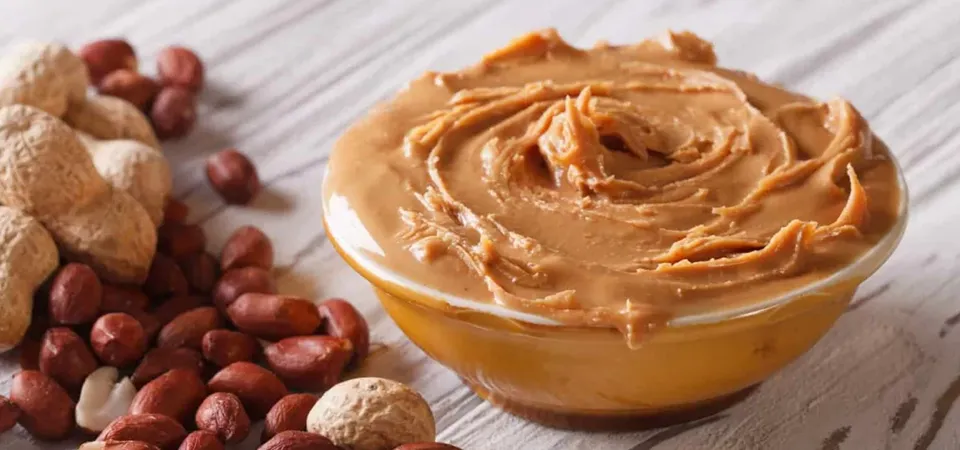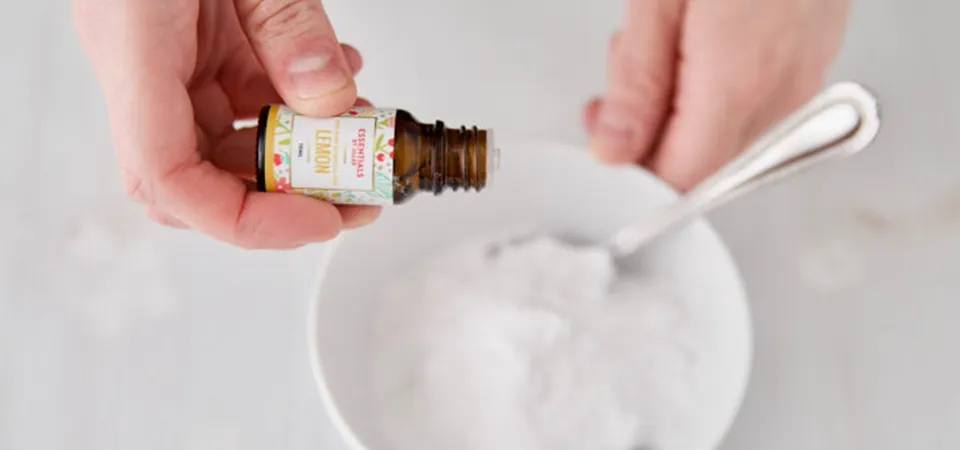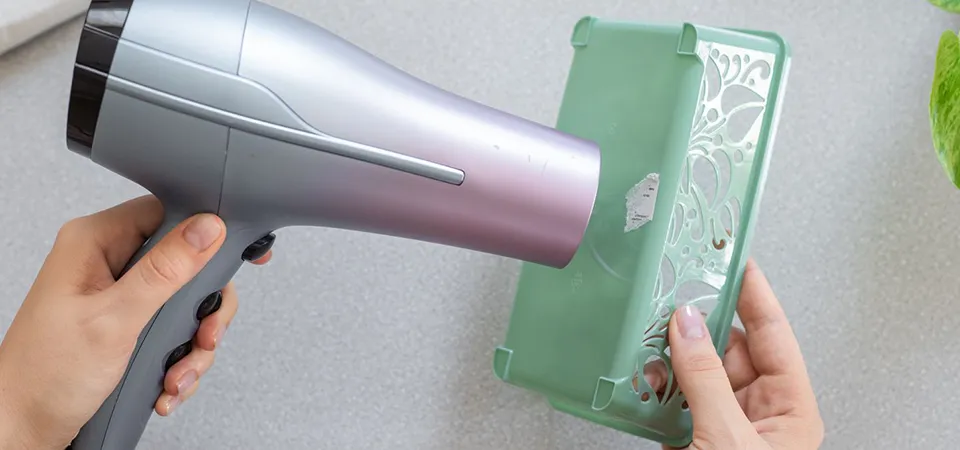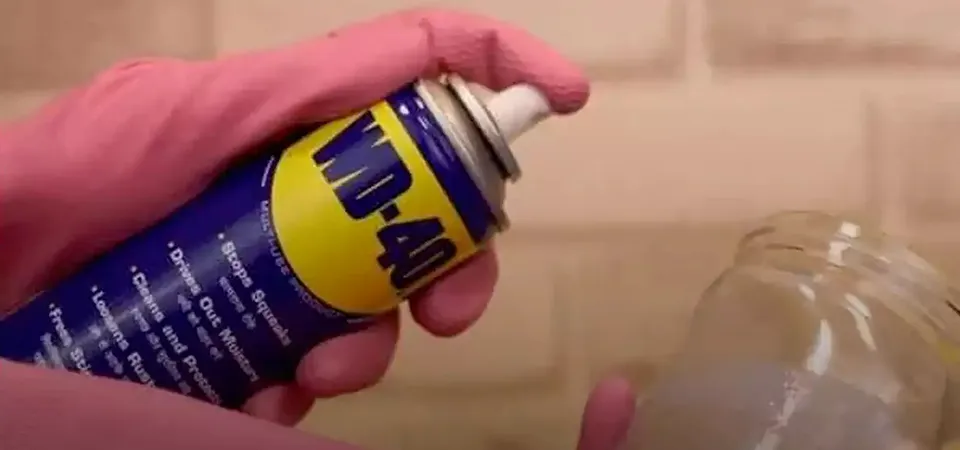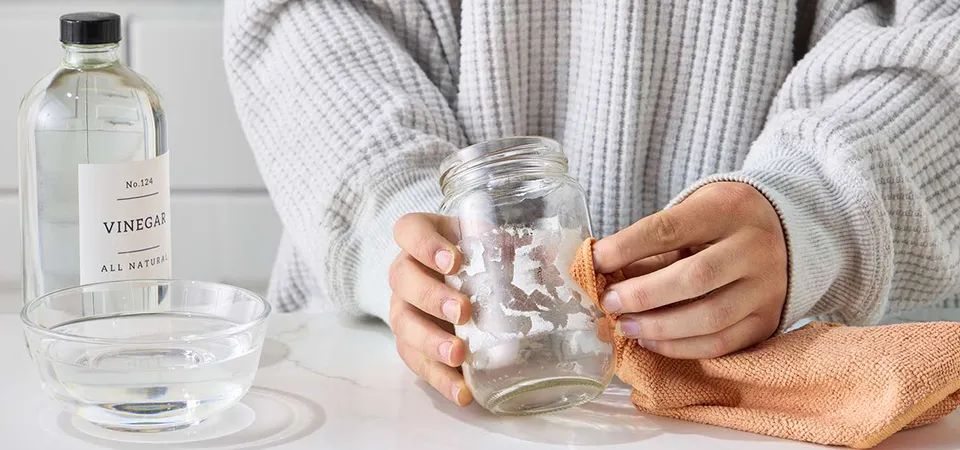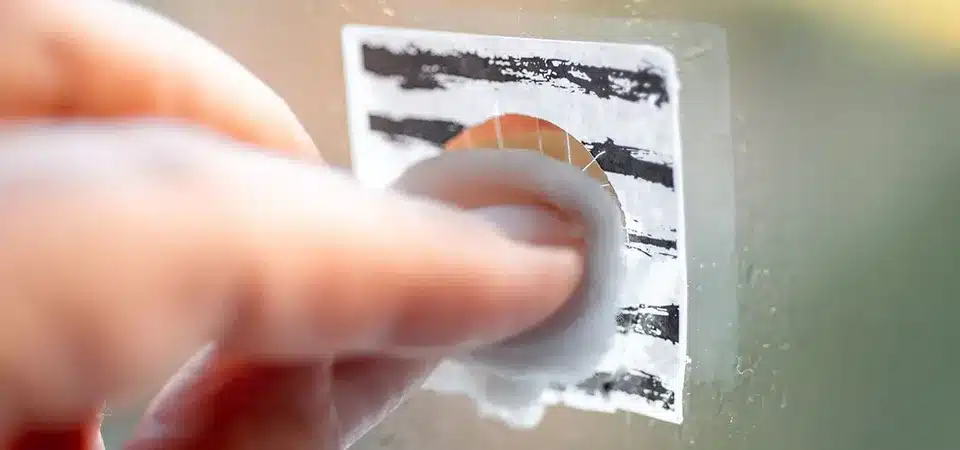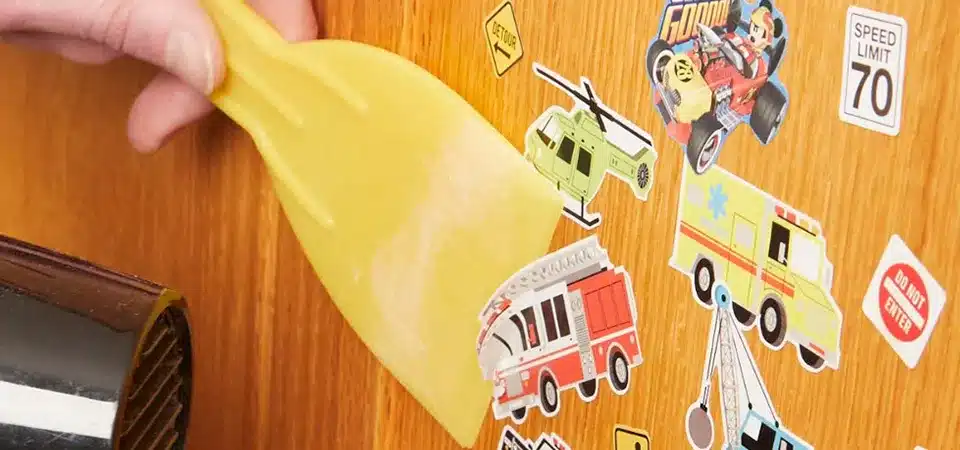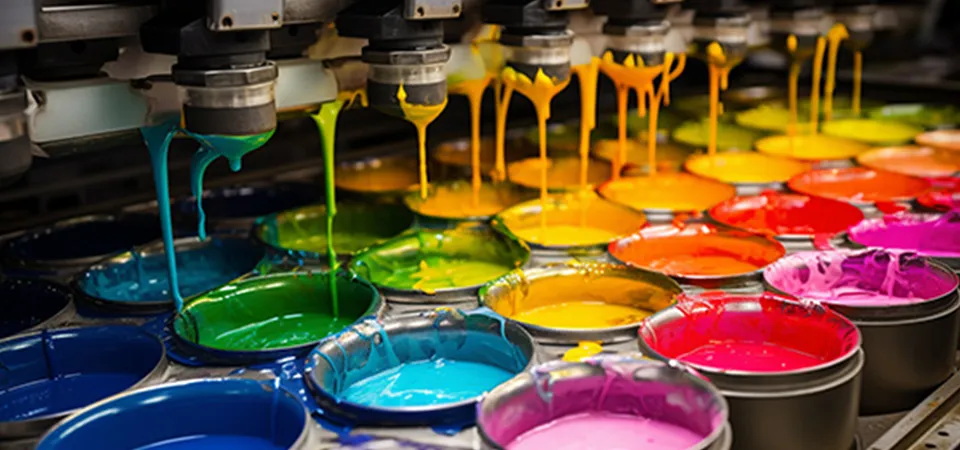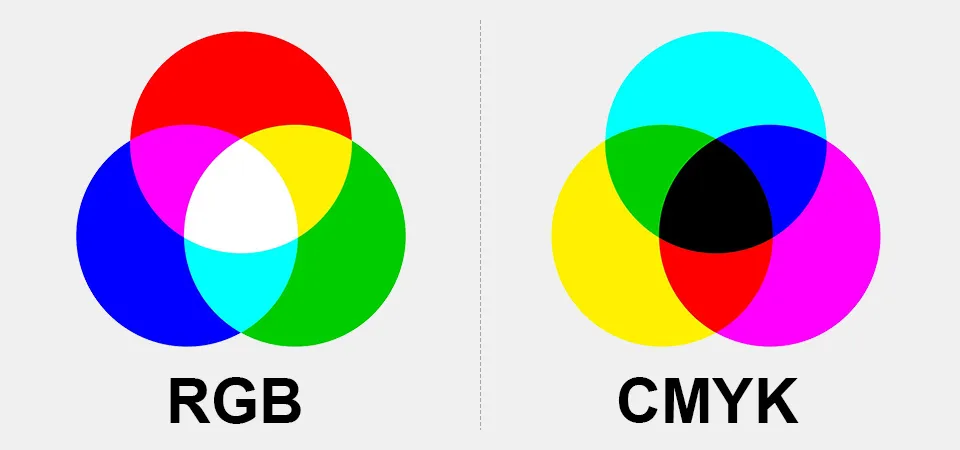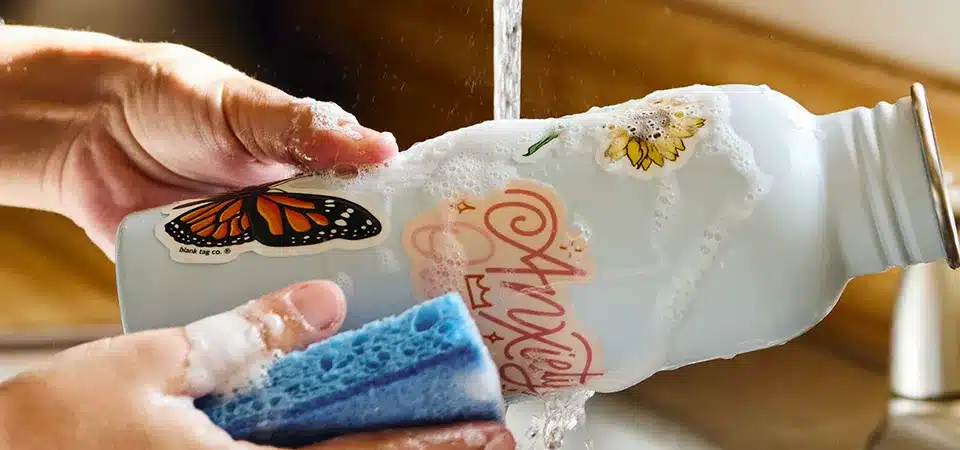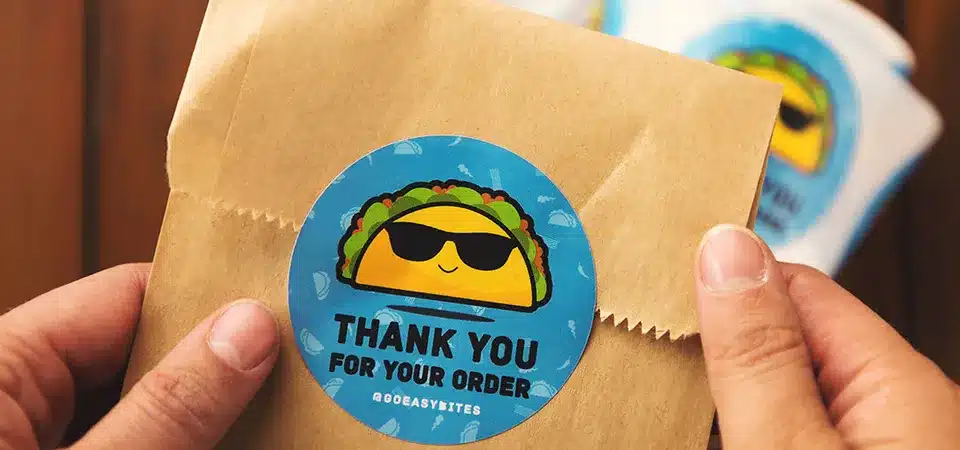That sticky price tag or old label leaves behind a gummy, ugly residue on your new plastic container. Scrubbing just smears the mess and using harsh chemicals can ruin the surface.
To remove stickers, gently heat the area with a hairdryer and peel, or use an oil-based solution like peanut butter or WD-40 to dissolve the adhesive. Always test a small spot first to avoid damaging the plastic.
In my sticker business, I focus on making labels that stick well. But I also know that sometimes, you need to take them off. The question is how to do it without leaving a mess or damaging the product. Plastic is especially tricky because it's softer and more sensitive to chemicals than glass or metal. I decided to test some of the most popular methods on a few old plastic storage bins to see what really works. Here's a detailed breakdown of my experiments.
How I Tested the Methods for Removing Sticky Stickers (and Residue)?
To find the best way to get rid of sticky labels, I tried five popular methods on different types of plastic and stickers. My goal was to see which was fastest, cleanest, and safest for the plastic. Below is a summary of how each method performed, so you can pick the right one for your sticky situation.
| Feature | Peanut Butter | Coconut Oil & Baking Soda | Hairdryer | WD-40 | Vinegar Soak |
|---|---|---|---|---|---|
| Action | Dissolves adhesive | Dissolves and scrubs | Softens adhesive | Dissolves adhesive | Loosens adhesive |
| Best For | Gummy paper residue | Tough, dried-on residue | Whole vinyl stickers | Stubborn, hardened glue | Crusty paper residue |
| Mess Level | Moderate | Low | None | Moderate (smell/oily) | Low |
| Time | 20-30 min wait | 1-2 min scrub | 1-2 min heat | 5-10 min wait | 15-20 min wait |
| Result | Good | Excellent | Excellent (clean peel) | Excellent (powerful) | Fair (needs scraping) |
Sticker Removal Method: Peanut Butter
I've heard about this trick for years, so I was excited to test it. The idea is that the natural oils in the peanut butter are great at dissolving sticky adhesives, especially the gummy kind left behind by paper labels. As a bonus, most people have a jar in their pantry, so it's a very accessible solution. It's a safe, non-toxic method, which is a huge plus when you're working with items that might be used for food storage or by children.
The method
I started by peeling off as much of the paper sticker as I could by hand. A stubborn, sticky paper layer was left behind. I then took a spoonful of creamy peanut butter and spread a thick layer over the entire residue area. I made sure it was completely covered. I left it to sit and let the oils soak in and do their work. The general advice is to wait about 15 to 30 minutes.
How it went
After 20 minutes, I took a paper towel and started wiping the peanut butter off in a circular motion. The sticker residue and peanut butter came off together surprisingly easily. It turned the gummy mess into a soft paste that was simple to remove. I did have to use a bit of pressure, but it worked without any scratching. The final step was to wash the plastic bin with warm, soapy water to remove the oily film. It was effective, but a little messy.
Sticker Removal Method: Coconut Oil and Baking Soda
This method is a popular DIY cleaning hack. It combines the chemical power of an oil to break down the adhesive with the physical power of a gentle scrubbing agent. I was interested to see how it compared to the peanut butter method. In theory, this should be more powerful because you are actively scrubbing the residue away. I created a simple paste to test on a particularly stubborn, aged sticker on an old plastic toy.
The method
First, I mixed equal parts coconut oil and baking soda in a small bowl until it formed a thick, spreadable paste. If your coconut oil is solid, you might need to warm it slightly. I then applied this paste over the sticker residue. Using my finger and then a soft cloth, I began to scrub the area in a circular motion. The baking soda provided a slight grit that you could feel working on the glue.
How it went
This method was incredibly effective. The paste started breaking down the residue almost immediately. After just a minute of gentle scrubbing, the sticky mess was completely gone. The oil slick left behind was easy to wash off with soap and water, and the plastic was left perfectly clean and unscratched. This felt more targeted and less messy than the peanut butter method.
Sticker Removal Method: Hairdryer
This is my professional go-to method. As someone who makes stickers, I know that most modern adhesives are designed to be removable with a bit of heat. This technique works best on vinyl or synthetic stickers, which are less likely to tear than paper ones. The goal isn't to melt the sticker or the plastic, but just to warm up the glue enough to loosen its grip. I tested this on a branded logo sticker on a plastic water bottle.
The method
I set a hairdryer to a medium heat setting. Holding it a few inches away from the plastic surface, I moved it back and forth over the sticker for about 30 to 45 seconds. I was careful not to hold it in one spot for too long to avoid overheating the plastic. The edges of the sticker started to look a little softer. Then, I used my fingernail to lift one corner.
How it went
The sticker corner lifted up very easily. As I continued to peel it back slowly, I kept the warm air from the hairdryer pointed at the line where the sticker was separating from the plastic. The sticker came off perfectly in one smooth piece. There was absolutely no residue left behind. This is by far the cleanest and fastest method for removing whole vinyl stickers. It requires no cleanup afterward. Be careful with very thin or cheap plastic, as too much heat could cause it to warp.
Sticker Removal Method: WD-40
WD-40 is a powerful tool found in most garages. It's a petroleum-based product designed to penetrate and lubricate, but those same properties make it excellent at breaking down tough, gummy adhesives. This is the method I reserve for the absolute worst-case scenarios, like the residue from old duct tape or decade-old price stickers that have hardened into a varnish. I tested it on some ancient, thick glue on a plastic storage drawer.
The method
First, I peeled away any loose paper a scraper could lift. Then, I sprayed a small amount of WD-40 directly onto the sticky residue, enough to saturate it completely. I let it sit for about 5 minutes to penetrate and break down the adhesive. After waiting, I took a paper towel and wiped the area firmly. The gunk started to dissolve and lift off immediately.
How it went
This method worked like magic. The really tough, hardened glue that other methods struggled with just melted away. It required very little scrubbing. However, WD-40 has a strong chemical smell, so it's best to use it in a well-ventilated area. It also leaves behind an oily film that must be thoroughly cleaned with soap and warm water, especially if the plastic item is for a kitchen or a child's room. Always test it on a hidden spot first, as it could potentially discolor some sensitive plastics.
Sticker Removal Method: Vinegar Soak
White vinegar is a great household cleaner, and its acidic properties can help dissolve certain types of glues. This method is a good non-toxic alternative to harsh solvents if the oil-based methods haven't worked. It's particularly useful for paper stickers that have become hard and crusty over time. I tested this on an old, faded paper sticker on a plastic organizer.
The method
I took a paper towel and folded it into a small square, about the size of the sticker residue. I soaked this paper towel in plain white vinegar and squeezed out the excess so it was damp but not dripping. Then, I placed the damp paper towel directly over the sticker residue, ensuring it was fully covered. To keep it from drying out, I covered the paper towel with a small piece of plastic wrap. I let it sit for about 20 minutes.
How it went
After 20 minutes, I removed the plastic wrap and paper towel. The vinegar had softened the paper and some of the glue underneath. I used a plastic scraper (an old gift card works well) to scrape away the gunk. It came off, but it required more physical effort and scraping compared to the WD-40 or oil-and-baking-soda methods. The vinegar smell was strong but faded quickly after I washed the area with soap and water. This method works, but it's not as universally effective as the others.
Conclusion
For clean removal, heat is best. For sticky residue, use oil-based solutions. Always test first, and be gentle to keep your plastic items looking new and clean.

